Flavor characteristics of low-caffeine coffee beans grown organically in Mexico
Professional coffee knowledge exchange more coffee bean information please follow the coffee workshop (Wechat official account cafe_style)
Mexican coffee may be relatively small in the Asian coffee market, but Mexico is the leading coffee supplier in North America. Mexico's high altitude and volcanic soil give birth to the mild and meticulous flavor of Mexican coffee. Qianjie, as a coffee bean research maniac, coffee beans in any region will try their best to study roasting, cup testing, brewing and so on. Of course, Mexican coffee beans have also become one of the research objects in Qianjie.
Geography of Mexico
Mexico is located in North America, bordering the United States in the north, Guatemala and Belize in the southeast, the Pacific Ocean in the west and the Gulf of Mexico and the Caribbean in the east. The capital, Mexico City. Mexico faces the Pacific Ocean to the west, the Gulf of Mexico and the Caribbean to the east, and leads to the Atlantic Ocean. Coastal areas are coastal plains, while the central part is plateau and mountainous, including many volcanoes. The coffee growing area is 1100-1700m. Qianjie believes that the cultivation of high altitude and volcanic soil is the key to the rich and balanced flavor of Mexican coffee.
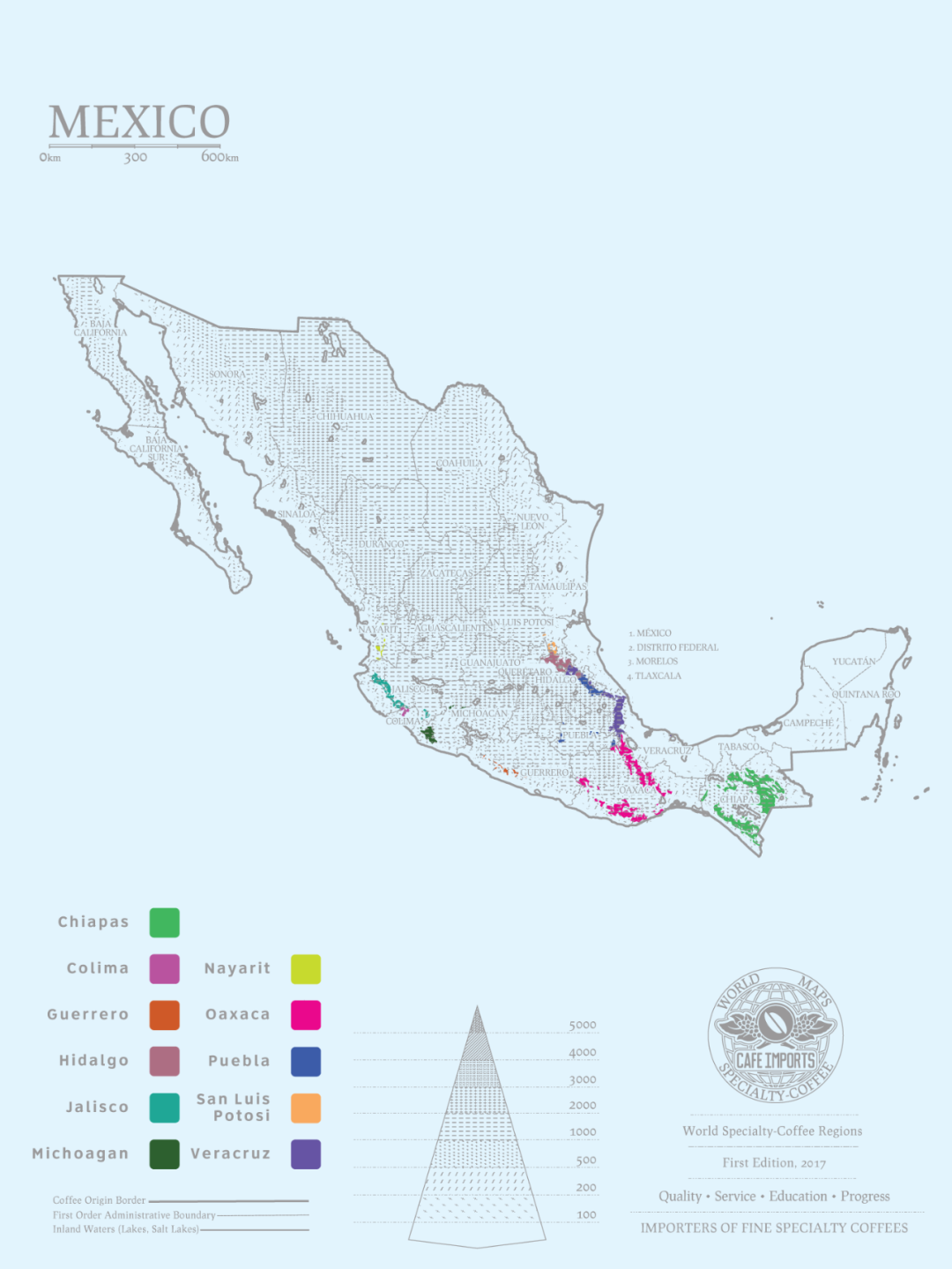
Planting history
Coffee arrived in Mexico very late. In the second half of the 18th century, Spanish immigrants brought coffee trees from Cuba and Dominica in the Caribbean, but it did not really grow coffee commercially until the 1790s, when Germans and Italians emigrated from Guatemala and Central and South America to Mexico, and Veracruz first appeared coffee plantations.
Mexico has always maintained the tradition of small farmers. The agricultural reform after the Mexican revolution allowed aborigines and farmers to own small plots of agricultural land and be self-sufficient. The 1970s and 1980s were the golden age of Mexican coffee. The output of coffee in Mexico is about 630kg per hectare. Mexico produces about 5 million bags of coffee a year, making it the fourth largest coffee producer in the world. Most of its coffee is produced by nearly 100000 small farmers.
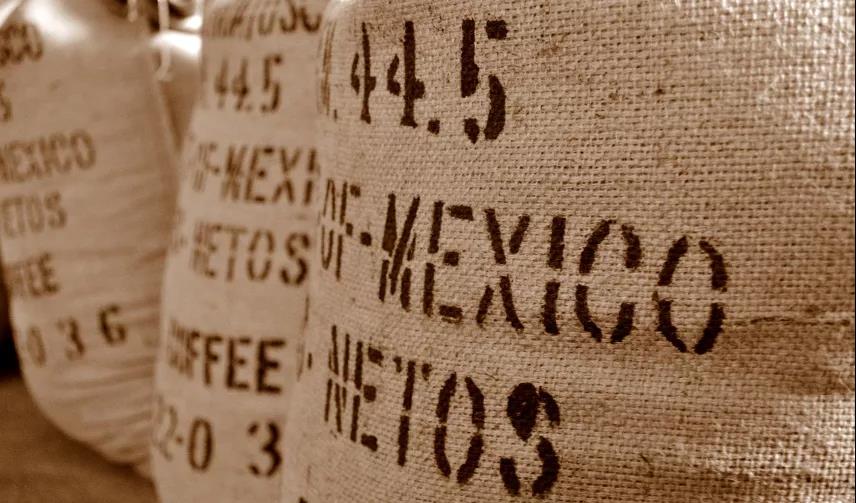
In 1973, the Mexican Coffee Association (Instituto Mexicano del Cafe, referred to as Inmecafe) established and controlled the coffee industry. The Coffee Association controls both coffee cultivation and the market for exportable coffee beans. The association provides farmers with minimum purchase prices, technical advice and other assistance. However, since 1991, the Coffee Association's activities have been reduced and its functions are likely to be further weakened.
Organic planting
Organic coffee can be said to be conscience coffee, emphasizing not using chemical fertilizers and pesticides, but using organic fertilizers, kitchen waste, compost and so on. Use ancient shade cultivation, which happens to be a favorite way of growing ancient iron pickups and bourbon coffee trees. But the cost of organic cultivation is high, so the yield is relatively low.

Since coffee seeds are buried in the soil, they do not need all chemical raw materials, but only grow under natural conditions, and they also need to go through strict control, supervision and certification by professional institutions in all planting and production processes in order to become organic coffee in the real sense. The certification process for organic coffee is quite long and takes about three years. So when coffee growers decide to do organic certification, it means a time-consuming and costly investment, and Mexico is the world's largest producer of organic coffee.
Coffee producing area
The uppermost edge of the coffee production belt is the Mexican coffee producing areas coatepec (Cortepe) and veracruz (Veracruz) in the north, Pluma coffee in the Oaxac (Oaxaca) producing area in the middle, and Chiapas (Chiapas) highlands bordering the Vivette south fruit producing region in Guatemala at the southernmost end. Mexican coffee is mostly washed Arabica coffee, which is characterized by a very strong special aroma, a bit like overfermented fruit. Chiapas (Chiapas) beans at the southernmost tip of Mexico have a mild and delicate taste and a very special aroma.
Coatepec (Koteppe):
1200m above sea level, mainly planted with bourbon and iron pickup, the taste is sweet, slightly grassy, slightly sour and greasy.
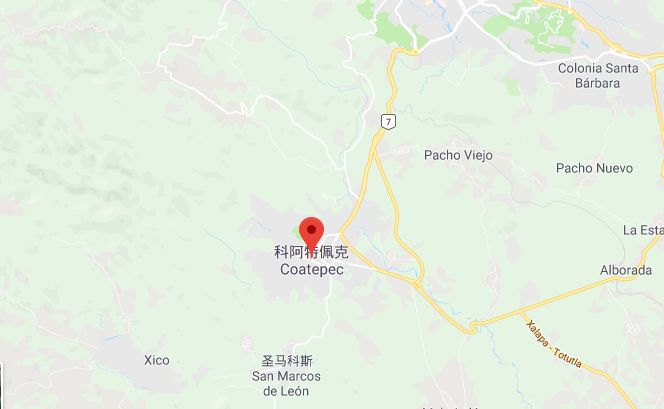
Huatusco (Huatusco):
1200-1500m above sea level, with slight acidity of plums, strong caramel sweetness and dark chocolate finish.
Pluma of Oaxaca (Oaxaca):
Most farmers in the Oaxaca Oaxaca producing area own less than 2 hectares of land in this area and have several large cooperatives. There are also some larger estates, although some have developed diversified tourism. 900-1700m above sea level, from December to March, growing bourbon, iron pickup, Kaddura, elephant beans. At the same time, it also produces high-quality coffee beans, of which Plumakoyce Pluma Coixtepec coffee beans grown in natural conditions are the best, as well as Altura Orisaba Altura Orizaba coffee and Altura Vatusco Altura Huatusco coffee.

Chiapas (Chiapas):
Chiapas is an important high-grade coffee producing area in Mexico, and the main high-grade beans are grown in high-altitude areas. On the other hand, many high-altitude beans of organic Mexican coffee are grown by aborigines, and these aborigines have organized a number of cooperatives to obtain assistance from foreign organizations, to strive for better prices, and to promote the progress of coffee planting technology, and so on. And organic cultivation is adopted to grow coffee.

Chabas is 1,100m above sea level and is harvested from December to April. In the early 1990s, the southern state of Chiapas became the most important coffee-producing region in Mexico, producing about 275000 tons of coffee a year, accounting for 45 per cent of the country's production. More than 2 million of Mexicans depend on coffee for a living, and 75 per cent of Mexican coffee farmers work on less than two hectares of land. These small farmers produce about 30 per cent of the country's coffee each year, while the rest are produced by large or high-capacity farms.

Chabas coffee has a moderate consistency, mild but sweet flavor, dry aroma with banana and cocoa nut aromas, wet aroma with obvious honey-like sweet aroma, and walnut, almond aroma, the most obvious taste is sucrose-like flavor, if the roasting degree is not deep, you can also feel a light lemon flavor, mild but slightly short tail, is a light. Sweet, approachable coffee.
Coffee cultivars
The popular way for aborigines to grow coffee is traditional agroforestry. Coffee is planted among a variety of native trees, and the ecosystem is close to forest. Mainly to bourbon Bourbon, Kaddura Caturra, iron truck Typica, as well as giant coffee beans (Maragogype elephant beans) and Cleo (Criollo).
Iron pickup and bourbon belong to the same ancient Arabica coffee species, which are loved by people for their rich acidity and excellent flavor quality.
Kaddura is a single gene variant of bourbon. It was found in Brazil in 1937 that its production capacity and disease resistance were stronger than those of bourbon species, and the plants were shorter and easier to harvest. Unfortunately, it is the same as bourbon species that have periodic problems of production capacity fluctuation every two years.

Cleo is a natural mutant of the iron pickup, which is commonly found in countries such as Peru, Bolivia, Colombia and Mexico. Some countries in Latin America that grow coffee also call the iron pickup "Criollo". Can be seen as Cleo is a localized tin pickup.
Some people think that the best giant coffee beans are made in Mexico rather than Guatemala, but the supply and quality of coffee beans in both places can vary. The coffee beans, known as Maragogype, are large-grained and produce coffee that is smooth, mellow and fragrant.
Coffee treatment
Mexican coffee beans are mostly treated with water. Use a peeling machine to separate most of the pulp from the coffee beans, then guide the shelled beans to a clean sink, soak them in water and ferment to completely remove the residual pulp layer. In the past (about five years ago), washing was often the first choice for good coffee bean treatment.
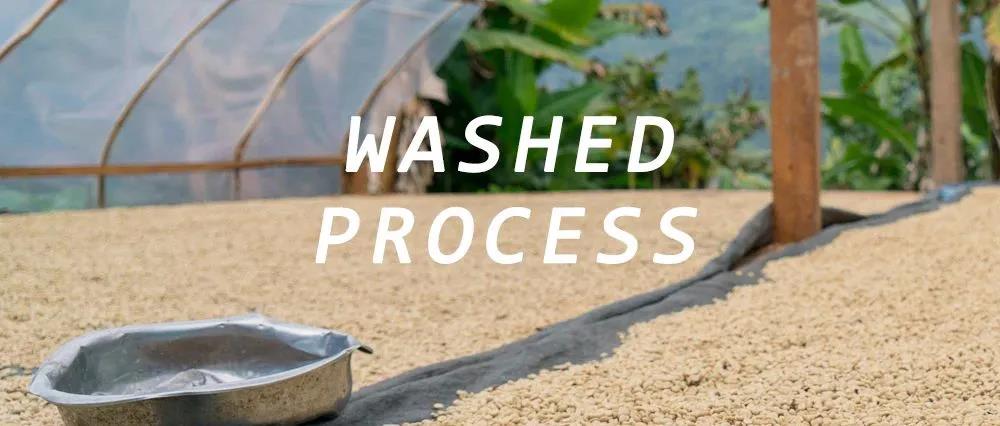
Qianjie Coffee thinks that the water-washed coffee has obvious acidity, good cleanliness, moderate touch and the most consistent quality of raw beans. The biggest manifestation of the appearance of washed coffee beans is to retain the obvious silver skin center line.
Coffee bean grading
Mexico has the same hierarchy as Guatemala and Costa Rica.
SHB = Strictly Hard Bean very hard beans
GHB = Good Hard Bean good hard beans
HB = Hard Bean hard beans
Pacific normal level
It is mentioned above that we have been studying Mexican coffee beans in front of the street, and this time the coffee beans are also a special coffee bean-Mexican decaf coffee beans.

Country of origin: Mexico, Mexico
Producing area: Chiapas Chiapas
Altitude: 900m-1500 m
Variety: bourbon, Kaddura, Tippika, Criollo
Treatment method: Swiss water treatment
Grade: HG
Production season: 2020
Swiss low cause water treatment method
This batch uses Swiss water treatment decaffeinated technology, this treatment will soak raw coffee beans in hot water, the soaking stage has actually partially removed caffeine. The soaked solution is then filtered with activated carbon and finally poured back into the coffee beans.
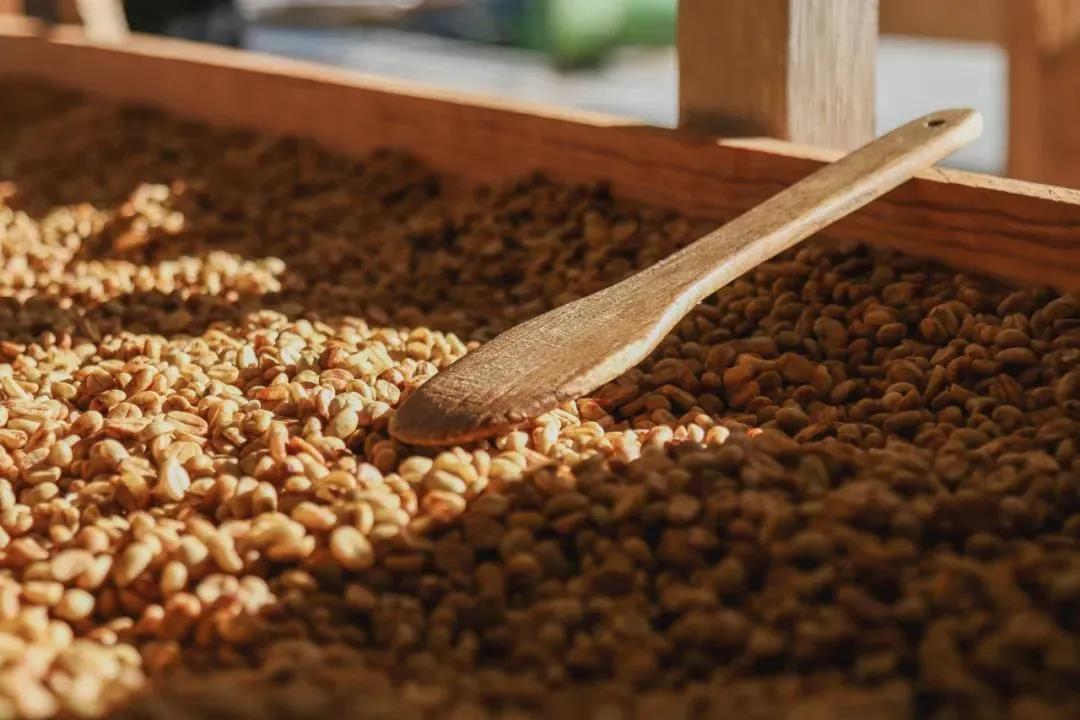
This series of steps effectively removes 99.9% of caffeine, and in addition to requiring no use of chemical solvents, the soaked solution can be reused in different batches of treatment procedures.
How to bake Mexican decaf on the front street?
Roaster: Yangjia 800N
Furnace temperature preheated to 200 degrees, facilities dropped to 165 degrees into the pot, throttle opened 3, firepower adjustment 130, temperature recovery point 1: 32 ", maintain firepower, 5: 50" turned yellow, grass smell disappeared, entered the dehydration stage, firepower was reduced to 110, throttle was opened to 4, and firepower was reduced to 110 again at 166 degrees.

The surface produces wrinkles, the smell of toast changes to coffee, as a prelude to an explosion, when the firepower remains the same, the throttle opens to 5, and pay attention to the sound of the explosion. When it starts to explode at 9: 30, all the throttle doors are open. After an explosion, the development time is 3 minutes, and the pot is 196.4 ℃.
Coffee cup test report on Qianjie

The suggestion of cooking in Qianjie
Filter cup: Kono filter cup
Water temperature: 88.8 ℃
Powder content: 15g
Powder / water ratio: 1:15
Degree of grinding: medium grinding (Chinese standard No. 20 screen pass rate 75%)

Cooking technique: three-stage extraction. Steaming with 30 grams of water for 30 seconds, small water injection around the circle to 125 grams for segments, when the water level is about to expose the powder bed, continue to inject water to 225 grams to stop water injection, and so on when the water level is about to expose the powder bed, remove the filter cup, the cooking time is 3 minutes and 10 seconds.
Cooking flavor: dark chocolate, cream, nuts, citrus, smooth taste.
For more boutique coffee beans, please add private Qianjie coffee on Wechat. WeChat account: kaixinguoguo0925
Important Notice :
前街咖啡 FrontStreet Coffee has moved to new addredd:
FrontStreet Coffee Address: 315,Donghua East Road,GuangZhou
Tel:020 38364473
- Prev
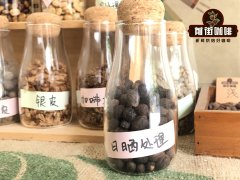
Yemeni Coffee Flavor and Taste characteristics of Yemeni Coffee treated by hand tanning in the Ancient Coffee growing country
Professional coffee knowledge exchange more coffee bean information please follow the coffee workshop (Wechat official account cafe_style) Yemen is one of the ancient coffee growers, the flavor is actually quite wild. Europeans have been obsessed with the wild Yemeni mocha since the 17th century. Yemen has an extremely dry climate with an annual rainfall of 400-750mm. Fortunately, the coffee gene in Yemen comes from Ethiopia.
- Next

What is the traditional Indian drink Chai latte Chai Latte? How to make a latte?
Chai Latte coffee is hot, fragrant, slightly spicy and popular in cafes everywhere. But despite the fact that it is served in a coffee shop and named after a latte, it doesn't actually contain any coffee at all. Chai is one of the oldest tea drinks in the world. It originated in India thousands of years ago, in the past two.
Related
- Beginners will see the "Coffee pull flower" guide!
- What is the difference between ice blog purified milk and ordinary milk coffee?
- Why is the Philippines the largest producer of crops in Liberia?
- For coffee extraction, should the fine powder be retained?
- How does extracted espresso fill pressed powder? How much strength does it take to press the powder?
- How to make jasmine cold extract coffee? Is the jasmine + latte good?
- Will this little toy really make the coffee taste better? How does Lily Drip affect coffee extraction?
- Will the action of slapping the filter cup also affect coffee extraction?
- What's the difference between powder-to-water ratio and powder-to-liquid ratio?
- What is the Ethiopian local species? What does it have to do with Heirloom native species?

